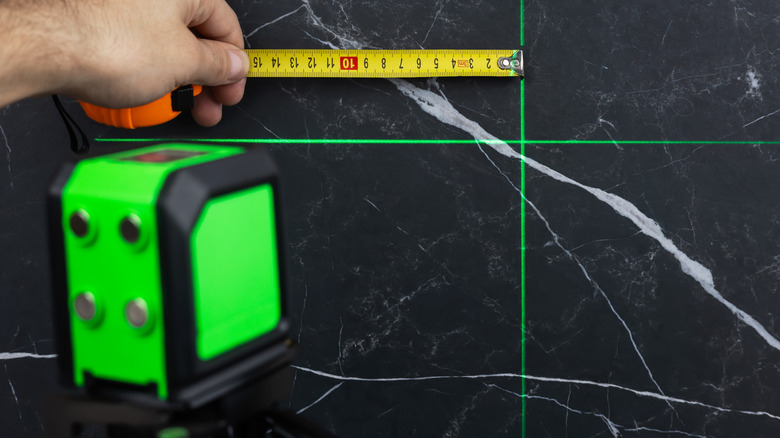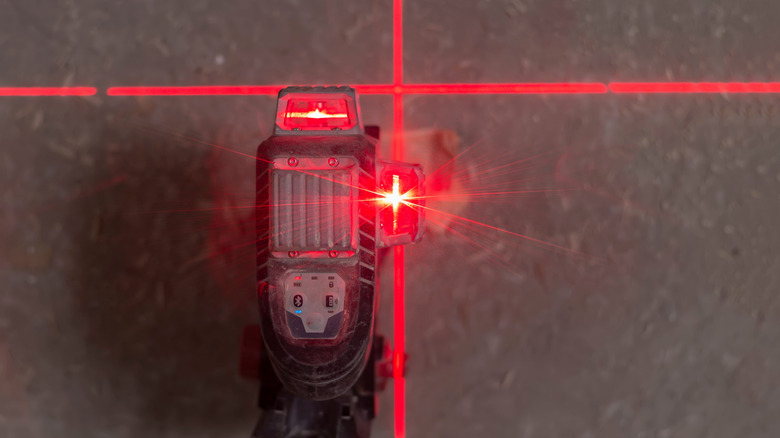Red Or Green Laser Level: How To Know Which Color To Use
We may receive a commission on purchases made from links.
Broadly speaking, the purpose of a laser level is to measure long, flat surfaces, as well as ensure that they're leveled out. In theory, the color of the laser produced by a level shouldn't matter so long as its measurements are accurate. In actuality, though, the precise color of the laser you're using can have small yet significant effects on the clarity and accuracy of the measurements you're taking, which can make your job easier or harder.
The two most prominent colors of lasers you could find on a level available at your local Home Depot are red and green. Red laser levels are more or less considered the standard for handiwork purposes, which is why they're generally cheaper than green levels. However, while they are more expensive, the increased clarity that comes with a brighter green laser can be invaluable when working in bright, outdoor settings. It would be ideal to have one of each color level in your toolbox if you can, but if you need to prioritize, you should use a green level for long-distance, outdoor work and a red level for indoor work.
Green levels are brighter, but red levels last longer
Compared to red light, green light has a shorter, stronger wavelength in the visible spectrum, coming out brighter and stronger as a result. Even if you were working in broad, bright daylight and trying to take a measurement over a long distance, a green laser from a laser level would still show up bright and clear. This makes it great for outdoor jobs like building a deck. Of course, this brighter light also necessitates greater power consumption, which means green levels may not be able to be operated for as long as a red level. The brighter light also often results in a much higher price point, with a product like the DeWalt green cross-line level coming in at a chunky $229 at Home Depot.
Compared to green levels, red laser levels are a much more accessible option. A similar product, the Bosch red cross-line level, costs only $89.97 at Home Depot. The obvious downside to red light is that, due to its longer wavelength, it doesn't project as well in bright conditions or over as long a distance. However, when working in low-light, indoor conditions for small jobs like assembling furniture, red light levels can do their job just as well as green levels, and for longer stretches since red light doesn't consume as much power.
As an aside, red laser levels are broadly more compatible with laser receiver devices. However, there are specialized receivers for both red and green levels, as well as hybrid receivers that can detect both types of light.

